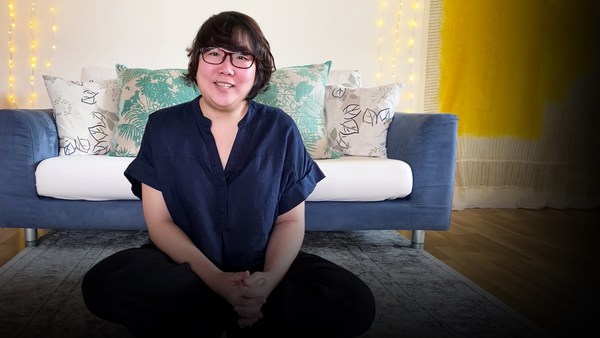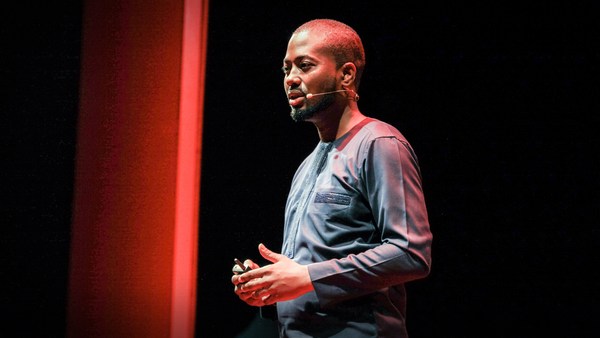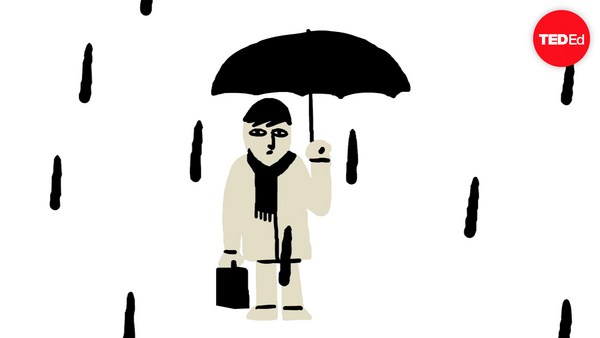According to the American Academy of Ophthalmology, we create 15 to 30 gallons of tears a year. I am what you would call a high-volume producer. Now even though we do create less tears as we age, I figure by the time I'm 80, I will have filled up 40 average-sized bath tubs.
Now crying in my early years? Not something I would brag about. When I was five, I thought it was a good idea to practice writing my name on the side of the house. Outside the house. Momma didn't agree with me much. She handed me a toothbrush and said, "Here, scrub." So I did. I'd sit at the dining room table for what seemed like an eternity. I didn't want to eat my vegetables. You probably know the feeling. I'd miss all my favorite shows and cry like crazy. Crying was always associated with something bad.
Fortunately, I grew up. I stopped writing on the walls, started eating my vegetables, and I entered the wonderful world of motherhood. And let me tell you, crying takes on a whole new meaning.
I was nine months pregnant and I was sitting on the couch, looking at the front door where my bags were packed, waiting for me, because I was hopeful that today would be the day. I settle in a little bit more, and I think to myself, "You know, we can put humans into space, but we can't seem to figure out when a baby will be born." And then I feel this pressure build up in my chest, my throat get really tight, and I just burst into tears.
And you know what? I had no idea why. And not knowing why at the time, well, that just got me more upset, so I eventually was just upset for being upset. I took a deep breath -- (Inhales) and I let it out -- (Exhales) Thought that would help, but no, it didn't. Then my brother walks in with his smirky grin and he says to me, "What's wrong with you?" I said, "Nothing, just leave me alone." And he did, he ran as fast as he could. And you know what I did when he left. I cried even harder. I was ashamed and embarrassed, just like when I was a kid.
Now lucky for me, I only had to look at that bag sitting by the front door for another nine days, right before my expected date of delivery. And finally, my body said it was time. And after 18 hours of feeling my body try to expel this little human that weighed about the size of a bowling ball, and hours of pushing so hard that I thought for sure this baby was stuck, within a heartbeat, my beautiful baby girl Jennifer entered the world. And I looked at her, and she cried and then I just cried. All of that emotion and pressure that I had inside just seconds before was immediately replaced with the most joyous sense of relief that I had ever felt.
And after nine months of crying over these fears and anxieties and crazy out-of-control hormones, that was instantaneously transformed into the deepest, most heartfelt, happiest cry of my life. And I had no control. Those really hard tears, those happy tears, those overwhelming joyful tears, they had nowhere to go but out. And it was those tears, that moment, that incredible high, that inspired me to birth three more little miracles and start to help others have their own. I became a childbirth educator, and I started a whole new relationship with tears.
It was early in my 30 years of teaching, I had a class touch my heart like no other. The topic for the night -- emotions of pregnancy, go figure. And it was important for the class to first learn about the emotional changes and responses during pregnancy, and how when we cry, it can feel like the body's trying to push out that extra emotion, almost like it's processing what it can't hold inside. Like an exhaust port for extreme feelings of sadness, joy or even relief after days, years of anticipation of that one magical moment. It can literally feel like your body is squeezing out all that emotion in the form of water coming from our eyes. Our tears.
Now tears were always expected during my classes. Not mine this time, the new moms'. And this night in this class, it was way different. I had just finished talking about the emotional changes of pregnancy and I went in to talk about the couvade syndrome. Now the word "couvade" comes from a French term, "couver," which means "to brood," similar to birds protecting a nest. Well, who better to protect this nest than the expecting mother's partner? Also called a sympathetic pregnancy, the couvade syndrome is a real-life phenomenon, where the non-pregnant partner can take on pregnancy characteristics like mood swings, loss of sleep, weight gain and for some, a really intense drive to do something new and unexpected, like buy a new sports car or start a new hobby like gourmet cooking. The class usually laughs a little bit after that and that's it. We end the night. But it didn't end there.
When I finished my sentence, this big, burly father-to-be stands up, and I thought for sure he was leaving. But instead, in a really gruff, commanding way, he says, "Alright, you guys, how many of you have cried during this thing, you know, her pregnancy?"
I scan the class to make sure everybody was OK. They were fine, they were just very intent on what was going to happen next. And then, one gentleman raises his hand and says, "I have." And then another, and the stories just flowed. Even this really quiet gal -- she was the fiancee of one of the expecting moms -- she looks at her and she says, "See? I told you my crying was normal too." The class connected, they validated each other, and we all walked away with a new respect for the non-pregnant partners that night. For me, that solidified my passion to embrace those tears.
Then, it got better. On the last night of that same six-week class, one of the expecting moms came up to me. She asked to talk to me privately, and I said of course, and we went into the corner. And she says, "I need to thank you for saving my relationship." I let her go on, and she tells me that her husband was considering leaving her over her mood swings, out-of-control crying, and his turmoil and anger over this pregnancy. But he didn't leave. She went on to tell me that they realized now it's OK to cry. And he had told her that when he cries, he doesn't feel as angry. Wow! Not only did crying bring my class together, it kept that couple together.
And you know, his comment about anger was really, really intriguing to me, so I looked around, did some research, and sure enough, Dr. Oren Hasson, an evolutionary psychologist, he had some theories about when tears blur our vision, it really has the ability to, sometimes, reduce our ability to react to that anger. But the tears weren't the anger. They were more like the release valve. And though many of us, we try to keep those tears inside, but letting them out really may be the better move. Keeping them inside can amplify our feelings of anger or sadness.
And while we're releasing those tears, our hormones inside, they're on high alert, and we know this because of Dr. William Frey, a biochemist. He found that inside of our emotional tears -- not our everyday, like, yawning tears, but our emotional tears -- there's high concentrations of stress hormones and leucine enkephalins, which, easier on my tongue, is endorphins. And while our stress hormones are helping our bodies out, our endorphins, those feel-good chemicals, they're helping to act as a pain reliever to boost our mood. Now who wouldn't want that?
There are two triggers for the release of endorphins for most of us. Stress and pain. And for a woman giving birth, experiencing both stress and pain, endorphins, they are a gift. As the labor progresses, those endorphins will rise to help her with a potentially long labor. As a result, the mom is better able to cope, and she can feel more alert and almost euphoric after the birth.
Crying is just awesome. I wish there was a bigger word. Crying offers us an opportunity for physical relief, for intimacy between two individuals and ultimately, it promotes physical and mental well-being. And as an expression of our most intense interior human experiences, there is no need to be embarrassed, no need to be ashamed and no need to run away.
We need to have a healthy relationship with crying and change the way we view tears. We see them as overwhelming and scary and confusing, when they're really beautiful, soothing and reassuring. They're not to be seen as some screeching alarm bell that something is wrong but rather a natural functionality of our amazing bodies.
Crying is as essential to me as breathing. And now, if I'm caught crying on that couch by my wonderful husband, who has had to learn way more about crying than he ever wanted to, he doesn't run away. He'll ask me why I'm crying, and I'll let him know I just need my release. He'll take my hand, and you know what I'll do? I will let it all out. And then I'm going to sink into that deep sense of intimacy and extraordinary sense of relief that only my tears can bring.
Thank you.





